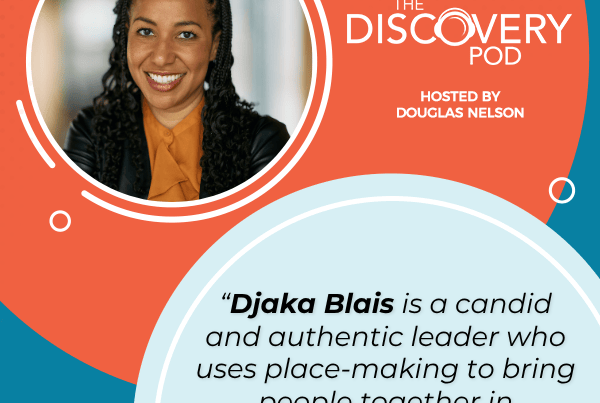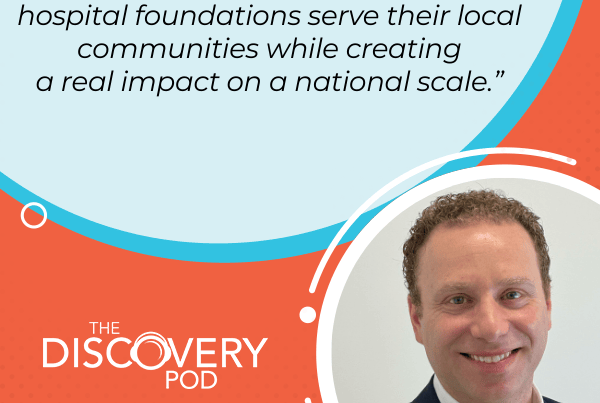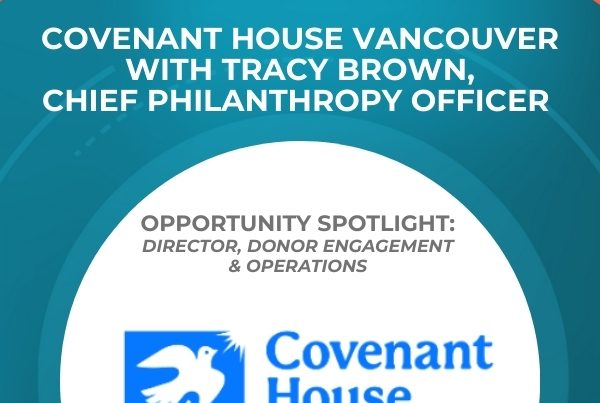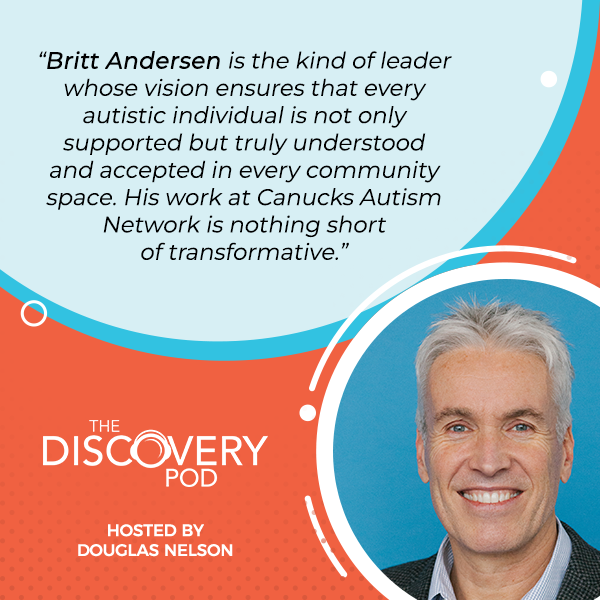
Today, Douglas Nelson sits down with Britt Andersen, the CEO of the Canucks Autism Network. The conversation explores how the Canucks Autism Network is making a profound impact on individuals with autism, ensuring they are understood, accepted, and supported in every community space. Britt shares insights on the organization’s growth, challenges, and the programs they offer, from sports and recreation to employment support. Tune in to learn about the vision driving this incredible work and how Canucks Autism Network is transforming lives.
—
Listen to the podcast here
Canucks Autism Network With Britt Andersen, CEO
In this episode, we have Britt Andersen. Britt is the CEO of the Canucks Autism Network, where he champions an ambitious vision to ensure that every individual on the autism spectrum is understood, accepted, and supported in all community spaces. It’s a big Band-Aid, and he talks about making difficult choices around what the organization can serve and when, controlling the scope of growth in the face of unquenchable demand, as well as supporting his team and taking advice from the community they serve, and the frontline staff who provide their services. This is a conversation with an experienced CEO with deep knowledge and wisdom about leading in our sector. If you’re looking at what it’s going to take to move forward in your career to become that CEO or Executive Director, you’re not going to want to miss this great conversation with Britt Andersen.
We aim for equity by creating communities where every individual on the autism spectrum is understood, accepted, and supported. Share on XBritt Andersen, welcome to the show.

Thank you, Doug. It’s a pleasure to be here.
Introduction To Canucks Autism Network
Britt, I’m really looking forward to our conversation to learn a little bit about your leadership journey, the organization you’re leading, and who you serve in the community. For those of our audience who may not be familiar, talk a little bit about the role of the Canucks Autism Network and who it serves.
The Canucks Autism Network is an organization dedicated to supporting people on the autism spectrum. Specifically, we have a vision that every autistic individual is understood, accepted, and supported in all community spaces. What that really means is we’re aiming for equity. We’re trying to create a community where everyone on the spectrum has the same opportunities that all of us enjoy. What that looks like is we serve children right through to adults. For children, we do a lot of things to build social connections, to create support, some transformative learning. Most of that takes place through sports, recreation, and arts. It could be things like a hockey program, learning to swim, soccer, gymnastics, something like that, or a music program.
It's about more than programs—it's about giving autistic individuals the same opportunities that all of us enjoy. Share on XA lot of those are introductory experiences designed to really boost social connection, build skills, and foster confidence. It also is great for families that feel like up until they get into a Canucks Autism Network program, they may feel like they’re quite alone in their journey. They don’t know any other families that are struggling with some of the challenges they’re facing. It brings those families together as well. It really serves both those purposes.

Canucks Autism Network: We strive to provide autistic individuals the same opportunities that all of us enjoy.
I was going to say as well that we do a lot around youth and adult programming. It’s been a relatively new addition for us in the last few years. Again, it’s a lot of sports and recreation-type activities, but there’s a lot more focus on those important transitions into adulthood. That’s building social connections, learning life skills, and mental health support. Ultimately, there’s a lot of employment programming that we do as well, where we actually train job skills and connect those individuals to employers. We have job coaches who ensure they’re successful. There’s a lot that we do along the way. We also do a lot of training and autism consultation in the community so that people don’t just rely on the Canucks Autism Network for their programming, they can go out into the community and take part in community sports and recreation or take part in social programs that exist within their home turf.
It is an organization that has certainly grown in prominence over the last number of years. It’s one of the reasons we’re really excited to have you on the show. I want to start with what I think is the really hard question, Britt. Let’s jump right into it. We’re going to break some news here on the show. We’ve had a number of guests on the show where the name of the organization is tied to either an external person or an external entity, like King’s Trust Canada, Sarah McLachlan School of Music, Jane Goodall Institute, Terry Fox Foundation, which I know you’re familiar with, and of course, Canucks Place Children’s Hospice as well. What are the advantages of being connected to a well-known brand name? What are some of the misperceptions that you face?
Great question. I will say the advantages are vast. First off, we are related to the Canucks organization. Our Founders are Paolo and Claire Aquilini, obviously Co-owners of the Vancouver Canucks. They have a son on the spectrum, Christian. He’s really the impetus, the reason that we exist. They had a vision that they needed to build a more inclusive space here in BC for people on the spectrum. They did that. It’s been about sixteen years.
The advantage, I would say, to having the name is that it opens doors. It’s a very prevalent brand, especially when we have seasons like this last one where the Canucks did very well. Phone calls tend to be returned more so than if you’re ABC Autism Network. That means nothing. Whereas Canucks, people are interested right away. It adds some credibility as well to the organization. It’s a brand that obviously has tremendous value in the community, and it carries over to our organization, so that’s wonderful.
I think one of the negatives to that is there’s a lot of misconception that people think we’re perfectly funded, we’re fully funded by this vast organization. It’s never the case. They are a wonderful source of funds. The Canucks for Kids Fund is the charitable arm of the Canucks organization, and they are unbelievably generous to us. That said, they’re not our sole source of funds. They are a fairly high percentage of it, about 30%. We have to go out into the community and raise money like almost every other charity out there.
I know it’s an issue that a number of organizations face. Ronald McDonald House is another one where you hear, “They assume that McDonald’s pays for everything,” and of course, they don’t. How do you communicate that issue to donors who are curious about whether there is a role for their gift at your organization?
It really is understanding, do they have that misconception? That comes out in a conversation. Typically, a prominent philanthropist will ask those questions. They want to know what our sources of funds are, and whether we are an organization that’s around for the long haul. We get into those types of conversations and just address them openly. People tend to get it once they understand.
It makes sense. One of the things that’s really fascinating about your organization, and you touched on it in the description of what you do, Canucks Autism Network has been very intentional in co-creating with the community. Tell us a little bit about how you’ve pursued that co-creation, and how that shows up in the services you provide to individuals and families.
When you have such a broad vision, which is understood, accepted, and supported in all community spaces, we’d have to be a massive organization to actually be able to deliver on that ourselves. We realized right from the get-go that success for us looks like creating confidence through introductory experiences for children and young adults, ensuring that there’s a bridge into a community-based program. A child might take a learn-to-swim program with us. We follow Lifesaving Society guidelines and training. They will pass that, and the hope is that then they will be able to go into a community-based swim program, continue swimming, go through all the different levels, and ultimately be successful.
What that means is we need to give some background and training to those organizations to accommodate the needs that those children may have. They may have unique behaviors. There may need to be some types of adaptations. That takes training. We work very closely with organizations like community rec centers. We work with the Lifesaving Society of Canada. We work with businesses of all shapes and sizes around things like employment opportunities. It’s limitless. Everywhere we touch, we want to have a bridge to a community-based program so that the individual can continue on.
Working With Prominent Partners
That’s working in collaboration with some of the organizations you just named, and I know there are many others in your roster of essential partnerships. How, as CEO, do you approach those partnerships when you’re looking for new organizations to partner with? I’m sure, given your name and the prominence of your organization, sometimes the phone rings, and people are saying, “Britt, I’ve got a deal for you.” How do you approach that?
It’s an interesting time. I can give a local example. In my community in the Tri-Cities, I’m in the Port Moody area. Very close by, there’s a small Taekwondo studio, and they did summer camps. That Taekwondo studio had, I don’t know, 25 kids or thereabouts. Three or four of those children were on the spectrum. The parents came in and explained. That posed some unknown challenges to the instructors, and they needed some guidance. We were able to provide some coaching for their instructors. As far as I heard, everything went smoothly and very successfully.
Those instances happen a lot. That was a small Taekwondo studio looking for resources online, trying to figure out who could do something to help them support these kids. They found us through a Google search. They reached out to us. We have a training department that fielded those calls, and we scheduled everything. That is becoming so common. It’s almost a very unique time. There’s a groundswell of interest in this.
We had a call from the RCMP looking for training, and it’s national in scope. There’s much more inbound calling than there is outbound calling. We’re not necessarily, and I think we have to be intentional about this too, because we want to train the right organizations. Fortunately, the phones always ring, and it’s organizations or individuals looking for that level of support and guidance. It’s an interesting time to be a part of this.
I just think how wonderful it is that your organization is there to answer that call from that Taekwondo studio. Full credit to them for reaching out and trying to find the right way to work with those kids and support them through that camp. That’s an encouraging story. We don’t hear enough of those.
That’s on a very small scale. We also do it on a much larger scale. One of our greatest successes has been working with Air Canada, trying to make the airport experience much more accessible. Families being are able to travel who never thought that was going to be a possibility because they had no idea how their child was going to react to this heavily overstimulated, oversensory experience of going into an airport, checking your baggage, going through security, and getting onto a plane. It’s very overwhelming and daunting in many ways.
We’ve been working with Air Canada and YVR airport, and we put together a training module that’s been very successful. We’ve rolled it out across a number of airports across the province, looking to move that to a national scope in the years to come, and just guiding families through that experience, making them much more sensitive, reducing the sensory overload as much as possible, but creating an environment that’s a little friendlier for those families. The number of people that have been able to take trips because of it has been remarkable. It’s been pretty cool.
Britt, one of the things I want to spend a little bit of time on here is the team that you have there at Canucks Autism Network. People might just see your face on the website and go, “He’s got it all down. He’s doing it all himself. That’s amazing.” While that’s probably mostly true, I’m sure you’ve got some help in doing it. How is the staff structured there, and the team structured at the organization?
The truth being, I do the least. My job, and I truly embrace this role as a servant leader, is to remove the obstacles that get in the way of my team’s success. I’ve got an amazing management team, and we are structured where we’ve got several different departments. We’ve got a programming department, we’ve got a development department, so obviously fundraising, marketing, communications. We have HR support. Those are the folks that are really making it all happen. It filters down to the actual program level.
We’ve got just under about 600 staff that deliver programs across the province. Most of them are part-time, but that’s a lot of people to manage. Throw in about as many volunteers as well, so 1,200 people that we’re managing every year to deliver those programs for us. There’s a lot that goes on, and I have this incredible team of people in my office that make that happen. Like I said, I support them. My job is really to make the expectation clear, to give them a little guidance in terms of what we’re trying to achieve, and then stay out of their way. They’ve always impressed me.
One of the big issues that we hear from CEOs we work with right across the country is the need to retain and attract that essential team. Some call it the war on talent and the war for talent. What do you think our sector could do better to attract and retain top talent in organizations?
I would say the sector itself, a systemic problem is we don’t promote ourselves enough as a viable option. That needs to happen probably at the high school level, and it needs to continue right on to post-secondary education. When I went through and got my degree, it was in business. I did not know about the charitable sector or the social profit sector as an option. It was never talked about. There was never a course option to take. There’s more of that now, but we need to do a better job.
I would say the top business students who come out of university now probably think the same. They want to get into the big finance firm, the big accounting firm, the sales and marketing organization. Are we on their radar? These are the top people. Is this a sector that they’re thinking about? I think we need to talk about that. We need to talk about the fact that there’s this thing called social profit. Believe me, it’s incredibly rewarding. I’ve been on the other side. I’ve been in the for-profit world for half of my career. This means much, much more to me. I think that’s one specific thing. It’s easy to say, it’s harder to do, but we just need more presence at the high school and university level.
Let’s go there, Britt. What drew you from the gold-plated private sector into the social profit sector those few years ago?
I started my career in sales and eventually a marketing role and then sales management, and I enjoyed aspects of it. I think that being able to close a sales call, that’s just who I am. I enjoy that. That’s the thrill of the hunt and being able to eat what you kill, that was exciting to me. However, not a lot of meaning. I spent a lot of my career in consumer-packaged goods. I worked for organizations like Labatt Breweries, Unilever, big organizations, lots of resources.
Selling a company a year’s supply of laundry detergent to put in their stores, it’s great for a bonus check, but it’s not that great intrinsic rewards. I actually had a recruiter reach out, and it was opportune timing. It was the right timing for me. I had a recruiter reach out and say, “Are you interested in getting into something different?” It was actually a role at Canadian Blood Services. It was a regional director job. They were looking for someone to bring a sales mindset to blood collection. What they liked about my background was strategic thinking, strategic planning, being able to teach a sales approach, and having sales targets or targets to achieve.
If you think about it, with blood collection, you do want targets, and you do want to hit those targets. Those targets need to be based on the demand for the product. I brought that in, and I would say it was a great success. It worked very well. I was there for almost half a dozen years, and it was a great experience. That was really my first step in.
This is the third organization that you’ve been the leader of in our sector. I’d be interested to hear what you can share about your leadership experience and how you manage the peaks and valleys of organizational leadership.
I think, first off, you need a clear vision. I think coming into all of my past experiences, perhaps that’s one of the areas where I make the biggest impact, really looking at everything we were doing and why we were doing it, and trying to distill what that real essence is. Why are people here doing their job day-to-day? Ensuring that that is rock solid and that everyone in the organization understands that we’re all working towards a common goal. I think really being able to articulate that for everyone in the organization adds that meaning and purpose.
In addition to that, the other parts are, I think, to have a bit of a mindset around abundance, as opposed to looking at everything as an opportunity, looking for change, showing gratitude, owning your mistakes, being willing to try things, and being willing to be innovative. If you can share that, along with that mindset comes a lot of change management. If you can navigate that minefield and get people on board with you, they tend to stick around, especially when you’ve had a few successes. They see that, “This vision is coming to light. We’re actually moving forward. We’re not just stuck in place doing our jobs day-to-day.” I would say that in terms of my philosophy around leadership, that’s been the big thing. Let’s really refine what we’re doing. Let’s get innovative and creative in terms of how we get there. Let’s not be afraid to make some mistakes because we’re going to make a lot of them.
Our mutual friend, Margaret McNeil, talks about leaders needing an emergency 911 list of people that they can call when they have a challenge or something. They are stuck, maybe, in one of those valleys. Who do you call when you have a bad day or a challenging decision you need to make as a leader?
I have a very informal group of buddies that I get together with probably twice a week, certainly every Sunday for coffee and once during the week for a mountain bike ride. After that ride, we sit down during the coffee, and we sit down and talk about each other’s businesses. Interestingly, none of them are in the social profit sector, they’re all business people, but we can relate to similar issues, and we can relate to management challenges.
Certainly, they’re sharp enough to understand when I explain a situation and give them context of what I’m working with, the size of the sandbox, and where we play. There’s usually some really good insight and feedback. I like to think that I add the same value to them. They still keep inviting me. Maybe I do. I guess you’d have to get one of them on this call after.
This isn’t a reference check. We don’t do reference checks on our guests. I think it’s really important to note that some of the people that we ask that question of, their informal group is within the sector or within their organization even, or sometimes it’s a relationship with the board. A number of leaders, just as you just shared, make sure to have those connections outside of the sector to get that other perspective, a different perspective on the issues that face leadership in the social profit sector, to add that flavor and give you the leg up in that. I think that’s really great.
Many of our audience are at that senior director or vice president level and are wanting to make the jump to CEO or executive director. They see how glorious it is. As you said, you do the least amount of work. They really want to take their foot off the gas and become the CEO. Of course, that’s not how it works at all. What advice would you give someone who is looking to make that step into that ultimate leadership role in an organization in our sector?
Be humble, walk in, and recognize that we all have a lot to learn. I’ve been at this for a while. I still have a lot to learn. I think that humility starts with asking about what you don’t know, being open to feedback, and going through and identifying for yourself what some of those challenges are. Have enough confidence in a mentor or someone who’s guiding you to be able to say to that person, maybe it’s an important member, maybe it’s a current senior leader, “I don’t really understand this. Can you help me with that?” I think if you do that enough, people warm up to that. They warm up to giving you that ongoing coaching and that ongoing feedback.
Certainly, in my organization, I’d say I have some very solid senior leaders. I feel it’s my duty to ensure that they’re ready for the next level, be it with the Canucks Autism Network, or if they choose, at some point, I hope they don’t, at least for the near future, but they choose at some point to move on to another organization. I need to ensure that I owe it to them to have the skills to be able to take on those next challenges.
Certainly, what they have a lot of insight into from me is my strategic mindset in terms of how I approach challenges. Not to say it’s always right, but they can see that they’ve been a part of that. I ask for their insights around most of the big decisions we have. Where they typically need to learn are some of the hard skills around things like how to read financial statements and how to make good decisions in that regard. There’s a lot that senior leaders don’t tend to know about the board experience and dealing with a board of directors. That comes from doing it.
I also make sure that my leaders actually have time. I dedicate time and an agenda for them to meet board members at board meetings. They’ll come in and make a presentation from time to time about some of the big priorities they’re working on. I really think that they need to find that within whatever their work environment is. If they’re currently at a lower level of management and want to get to that senior level of management, they need to start asking those questions and put themselves out there to try to get to that stage.
I really like that approach of making space for people to learn by doing. I think one of the big lessons of the last few years that I’ve seen for leadership in our sector is that leaders who are willing to be open and vulnerable, showing their work in terms of the mental thought processes they’re going through in deciding important decisions for the organization, really build that loyalty of their team. The ones who want to set themselves up behind the curtain like the Wizard of Oz and just come down with the answer are struggling mightily. It’s not surprising to hear you talk very much about that showing your work at the school of leadership.
Empowering Frontline Ideas
Doug, in my mind, the best decisions and the best things that have ever happened within this organization or any of the previous organizations I’ve been at were never my ideas pushed through. It was usually somebody on the front line, living what we’re doing day-to-day, who came up with an idea. It’s up to management to listen to it and to acknowledge that it is a good idea, “You are closest to this. You know it much better than I do. Let’s make it happen.” Those are the true successes. When I look back at my career, it’s not me going, “Let’s do this, this sounds like a slam dunk,” and forcing it down someone’s throat.
The best ideas often come from the frontline, from those who live and breathe the work every day. Share on XOne of my favorite lines in working with boards is there has never been a good idea that has followed the phrase, “You know what we should do.” I like that approach of asking the people who are doing the work what they need. When you’re thinking about your work at Canucks Autism Network, is there an example that jumps out at you or a change or something you’ve done differently based on an insight from somebody who is right there on that front line?
I think the biggest ones we have are some of the programming choices that we make. I would say we’re even farther down the front line in those areas than just talking to front-line staff. It’s actually talking to a leadership group that is comprised of, people on the autism spectrum. That guides some of the program choices we make. I’ll give you an example. We have this youth leadership group that was advising on, “Where do we take our youth and adult programming for the future?” They came to us with things we weren’t ready to hear because we hadn’t given it enough thought.
Women’s support group, like a women’s peer support group, “Let’s try and figure that out.” We need to figure out what some of those female issues and challenges are that people on the autism spectrum face. Where are we falling short? Where’s the community falling short? Another program they came to was, “We’re involved in dating, or we want to get involved in dating.” Healthy relationships and sexuality for people on the autism spectrum, it’s like, “Nothing really exists in that regard. Let’s figure out how to build that program. Let’s talk to enough experts that can help us put that together.” That actually didn’t cut well, it filtered up from staff, but that came from frontline people saying, “This is what’s missing for us. We’re on the spectrum, and we don’t know enough about dating.” We built those programs, and they are hugely successful, waitlists galore. In fact, I think we could quadruple the number of these programs that we run, and they’d still fill up lightning fast, but they’re vital.
We're building programs based on what autistic individuals tell us they need—like women's support groups and healthy relationship programs. Share on XThe Challenge Of Managing Growth
You’re working in an area where there is an unquenchable thirst for the services that you provide. Working with your leadership team, how do you make those choices about where you’re going to quadruple or where you’re going to sustain? How do you manage that growth?
That’s one of our biggest challenges, I would say. If I look at the mistakes I’ve made over the years being at CAN, it’s been about five years that I’ve been here, all the mistakes are trying to push growth too rapidly. It’s never a lack of demand, it’s unlimited demand. It really is, do we have enough staff resources to do it, to do it well? Are we pushing them too thin? It’s sitting down and just looking and saying, “W want to deliver programs.” If it’s, let’s say, children’s sports and recreation, we want to deliver programs following the Sport Canada model, they call it, across four different surfaces.

Canucks Autism Network: Growth is important, but doing it well and with the right resources is what truly matters.
We deliver programs that align with those four different surfaces. That’s water, that’s air, that’s things like gymnastics and swimming. Once we’ve done that, have we got enough of those programs? We look at, do we have enough of those programs in each of the communities we serve? It really comes down to, “Let’s tick those boxes.” If it’s something quite specific like swimming, those have to be certified swim instructors that put on those programs. Do we have enough swim instructors? Do we have that staff covered?
It really is this war room-type situation where we sit down and go, “Here’s what we got. Here’s what we want to be able to do. Realistically, can we do it all now? Do we have to spread it out over the coming months and years?” It’s wonderful because it gives us a vision that we keep circling back on and checking in on, “I wish we could do it all at once.” It’s just not realistic.
I think it’s one of the really unique, distinctive parts of our sector, of the social profit sector, particularly when you’re providing services to individuals or families. It’s not about building a market or letting people, or convincing people, “This is the right thing to do or the right thing to buy, the right program to enroll in.” Your organization, and many others that are providing vital services to families and individuals in the community, do have that unquenchable demand. How do we keep a sustainable organization full of healthy professionals providing valuable services to the community and hold in our minds that we’re never going to be able to address the ultimate need or the total need of the community? Is that something that you talk about around your leadership table, or is that something that you sometimes get over your skis in terms of, “Let’s grow too quickly,” as you said?
Yeah, it is. I’ve been guilty of this when I get more involved than I should, pushing to grow too quickly in our existing programs, adding more of the same, and simply not having the staff resources to be able to deliver on all of those, and also pushing innovation. Something entirely new that takes us down a different tangent. I’m aware of the scope of our business. I don’t want to grow too rapidly, but I do want to grow. I definitely have been guilty of that. Sometimes, I look at it and go, “This sounds like a small thing that we’re heading down a small path.” I’ll give you an example. The latest one is providing respite support for caregivers of people on the spectrum, a program around that. We don’t do that now. It sounds like we could start by dipping our toe in the water and starting in a very small way. My hunch is it’s never that easy.
We’ll try. We’ll pilot a project. I fully expect there will be a lot of feedback from the team that’s delivering on this and say that feedback. Some will be very good because it is an essential program that is missing in this province. I fully expect someone will say, “We’re not ready for this yet. In order to get ready, this is what we need.” I guess that’s where I have to listen and switch gears a little bit and rely on the leadership team to say, “Can we move forward with this with a few adaptations and make it a little bit better and more manageable? Is this something we’ve done and tried, it’s not for us at this point?”
Knowing when it’s time to throw the canoe in and jump in and just go into that stream, and when it’s time to just dip your toe in, is a big part of leadership.
Learning From Every Step
I suppose so. I learn every day.
There’s so much learning in this work. Britt, as we come to the end of our conversation, I’m curious to know, what are you looking forward to?
I think when I look at my career so far, when I started in this sector, the things that really excited me were the big wins. You bring in some revenue from a large philanthropist or an organization. You have a successful event like a gala or something else. I guess it was a little bit of the sales mindset. It’s like, “Look what we did. Look at this really tangible result, this big number that we’ve got that we can do so much more.” That used to be my thing.
As I’ve aged a little and got a little wiser, what excites me so much more is seeing the success of my team. Taking a manager or taking someone that’s a frontline staff and moving them to a junior supervisor position, and then seeing them eventually move into a management role. One day, they’re sitting at the executive table with you. I’ve had a few of those instances. That is my greatest joy. That person, I’m thinking of 2 or 3 of them as I tell you this, moving on one day to some other organization or this organization after I retire, and they’re leading it and they are living, and they’re taking this organization to a whole new place or some other organization to a whole new place. That is by far the thing that is most enriching to me.
That’s a great way to end our conversation, Britt. Thank you so much. Final thing before we go, let our audience know how they can learn more about the Canucks Autism Network.
Come to our website, CanucksAutism.ca. Go there, check us out on social media. You’ll see our social media is the most enriching and heartwarming thing you’ll ever see. You’ll see some of our programs firsthand. You’ll see hundreds of smiling kids and adults, and they’re thriving out there. Thanks to the work that my team does.
Thank you so much for being on the show.
Thank you, Doug.
Important Links
About Britt Andersen
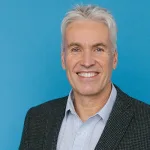 In Britt’s role as CEO of the Canucks Autism Network, he is responsible for the direction and execution of day-to-day activities and the delivery of an ambitious vision: that every individual with autism to be understood, accepted and supported in all community spaces.
In Britt’s role as CEO of the Canucks Autism Network, he is responsible for the direction and execution of day-to-day activities and the delivery of an ambitious vision: that every individual with autism to be understood, accepted and supported in all community spaces.

